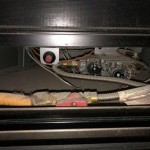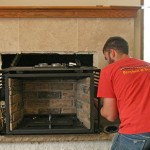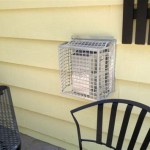```html
Propane Gas Logs For Fireplace: A Comprehensive Guide
Propane gas logs offer a convenient and aesthetically pleasing alternative to traditional wood-burning fireplaces. They provide the visual appeal of a real fire without the associated mess, labor, and environmental concerns. This article will explore the various aspects of propane gas logs, covering their benefits, types, installation, safety considerations, and maintenance.
Understanding the Benefits of Propane Gas Logs
Propane gas logs offer a range of benefits compared to wood-burning fireplaces and even electric fireplaces. These advantages contribute to their increasing popularity among homeowners seeking a blend of ambiance and practicality.
One primary advantage is convenience. Unlike wood-burning fireplaces, propane gas logs eliminate the need to source, chop, and store firewood. The user simply needs to ignite the logs using a remote control, switch, or other ignition system. This eliminates the physical labor associated with wood fires and provides instant heat and visual appeal.
Cleanliness is another significant benefit. Propane gas logs produce no ash, soot, or creosote, which are common byproducts of wood-burning fireplaces. This reduces the need for frequent cleaning and chimney maintenance, minimizing mess and potential fire hazards caused by creosote buildup.
Furthermore, propane gas logs offer greater control over the flame and heat output. Many models are equipped with adjustable valves or remote controls that allow users to regulate the intensity of the fire. This enables homeowners to customize the warmth and visual ambiance to their desired level, making it suitable for various room sizes and weather conditions.
Environmental considerations also play a role in the popularity of propane gas logs. Propane is a cleaner-burning fuel than wood, producing fewer emissions into the atmosphere. While not emission-free, propane gas logs contribute less to air pollution and greenhouse gas emissions compared to traditional wood-burning fireplaces, making them a more environmentally conscious choice for some consumers.
Finally, propane gas logs can be a cost-effective heating solution. While the initial investment in the logs and installation may be higher than for some other options, the long-term operating costs can be competitive. Propane is often a readily available and relatively affordable fuel source, and the ability to control the heat output can help minimize fuel consumption.
Types of Propane Gas Logs and Their Features
Propane gas logs are available in a variety of styles, sizes, and materials to suit different fireplace designs and aesthetic preferences. Understanding the different types and their features is essential for selecting the right logs for a particular application.
Generally, propane gas logs are categorized into two main types: vented and vent-free (or ventless). Vented gas logs are designed to be used in a fireplace with a functioning chimney. They produce a more realistic flame appearance, mimicking the look of a natural wood fire. However, they also exhaust a significant portion of the heat up the chimney, making them less efficient for heating a room.
Vent-free gas logs, on the other hand, do not require a chimney or venting system. They burn much more efficiently than vented logs, radiating a greater amount of heat into the room. However, vent-free logs typically produce a less realistic flame appearance and may require the installation of a carbon monoxide detector in the room. They also may not be suitable for individuals with respiratory sensitivities.
In terms of materials, propane gas logs are commonly made from ceramic or refractory cement. Ceramic logs are lightweight and durable, offering a realistic appearance with intricate details. Refractory cement logs are heavier and more heat-resistant, providing excellent heat radiation and longevity.
Size is another important consideration when choosing propane gas logs. The logs must be appropriately sized for the fireplace opening to ensure proper airflow and combustion. It is crucial to measure the fireplace dimensions accurately and select logs that fit comfortably within the firebox.
Beyond the basic types, various features can enhance the appearance and functionality of propane gas logs. Some models include ember beds that glow and flicker, adding to the realism of the fire. Others offer remote control operation, allowing users to adjust the flame height and heat output from a distance. Some advanced systems may even incorporate automatic shut-off features for safety.
The design of the logs themselves is a significant factor in their aesthetic appeal. Manufacturers offer a wide range of styles, including traditional oak, birch, and pine, as well as more contemporary designs. The level of detail and realism in the logs can vary significantly, with some models featuring hand-painted details and intricate textures.
Installation, Safety, and Maintenance of Propane Gas Logs
Proper installation, adherence to safety precautions, and regular maintenance are crucial for the safe and efficient operation of propane gas logs. Neglecting these aspects can lead to hazards such as gas leaks, carbon monoxide poisoning, and fire.
Installation of propane gas logs should ideally be performed by a qualified professional, such as a licensed gas fitter or HVAC technician. This ensures that the logs are properly connected to the gas supply, the gas pressure is correct, and the venting system (if applicable) is functioning correctly. Incorrect installation can lead to gas leaks, which are highly dangerous.
Before installation, it is essential to verify that the fireplace and gas supply are compatible with the propane gas logs. The fireplace must be in good condition and free from any structural damage. The gas supply line must be properly sized and capable of delivering the required gas pressure.
Safety precautions are paramount when operating propane gas logs. Carbon monoxide detectors should be installed in the room where the fireplace is located, as carbon monoxide is a colorless and odorless gas that can be deadly. Ensure the detectors are functioning correctly and replace the batteries regularly.
Never leave a propane gas log fire unattended, especially when children or pets are present. Keep flammable materials, such as curtains, furniture, and paper, away from the fireplace opening. Ensure that the fireplace screen is in place to prevent sparks or embers from escaping.
Regular maintenance is essential for the long-term performance and safety of propane gas logs. Inspect the logs regularly for any signs of damage, such as cracks or chips. Clean the logs periodically to remove dust and debris, which can affect their appearance and combustion efficiency.
The gas burner should also be inspected and cleaned regularly. Remove any debris that may be blocking the burner ports, as this can affect the flame pattern and gas flow. Check the gas supply line for any leaks or damage. If you suspect a gas leak, immediately shut off the gas supply and contact a qualified professional.
For vented gas logs, the chimney should be inspected and cleaned annually by a qualified chimney sweep. This removes any creosote buildup, which can pose a fire hazard. Ensure that the damper is functioning correctly and is fully open when the logs are in use.
Vent-free gas logs require less maintenance than vented logs, but they still need to be inspected regularly. Check the air vents around the fireplace to ensure that they are not blocked, as this can affect the air supply and combustion efficiency. Clean the logs and burner regularly, following the manufacturer's instructions.
Finally, it is important to follow the manufacturer's instructions for all aspects of installation, operation, and maintenance. These instructions provide specific guidance for the particular model of propane gas logs and are essential for ensuring safe and efficient operation. Improper use or maintenance can void the warranty and increase the risk of accidents.
```
American Gas Log Dundee Oak 24 In Vented Propane Fireplace Set With Complete Kit Safety Pilot Lit Do24hdlp The Home Depot

American Gas Log Cordoba 18 In Vented Propane Fireplace Logs Complete Set With Manual Safety Pilot Kit Cch18hd2lp The Home Depot

American Gas Log Aspen Whisper 24 In Vented Propane Fireplace Logs Complete Set With Pilot Kit And On Off Variable Height Remote Aw24hd2pss202r The Home Depot

The Best Gas Log Sets For 2024 Fireplaces Direct Learning Center

Gas Logs Ham County Nearby Lg Jordan

Small Gas Logs Reduced Depth Vented And Ventless

Peterson Real Fyre 24 Inch Woodstack Outdoor Gas Log Set With Vented Propane Stainless G45 Burner Manual Safety Pilot Ws Nap Ss Bbqgrills Com

Vented Gas Logs Heater Or Decorative Bart Fireside

Napoleon Reversible Vented Gas Log Set Logs Stove Hearth Patio

Can I Install Gas Logs In My Existing Fireplace Thomas Bros Propane
Related Posts








